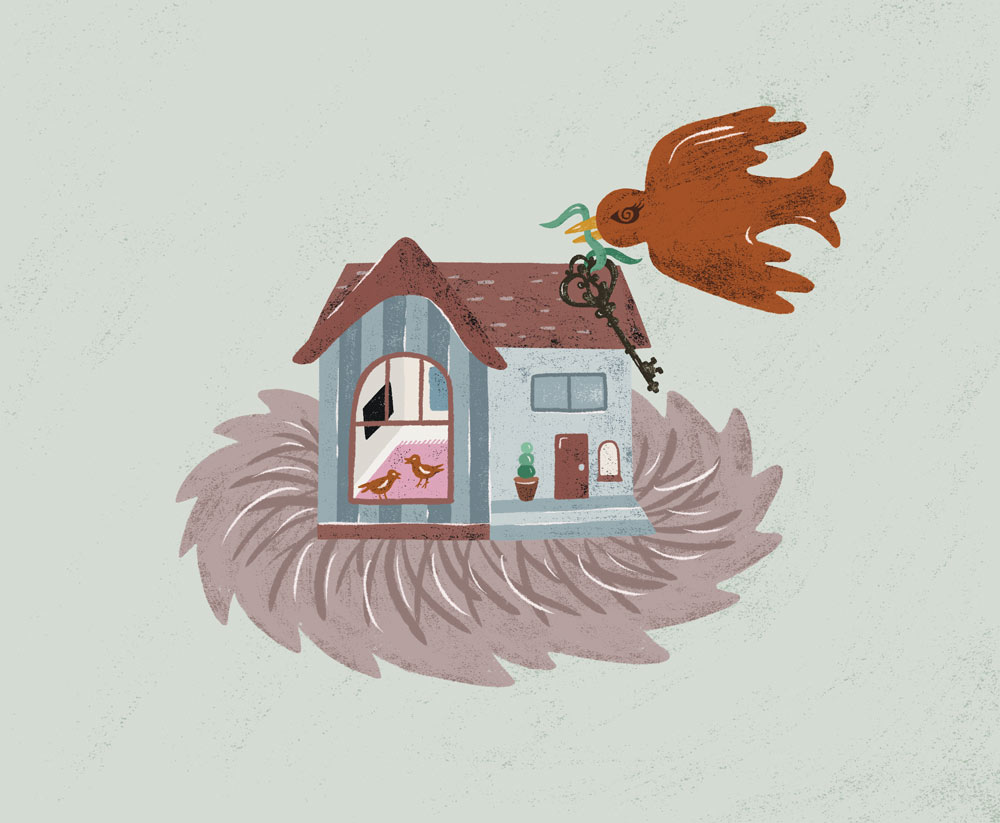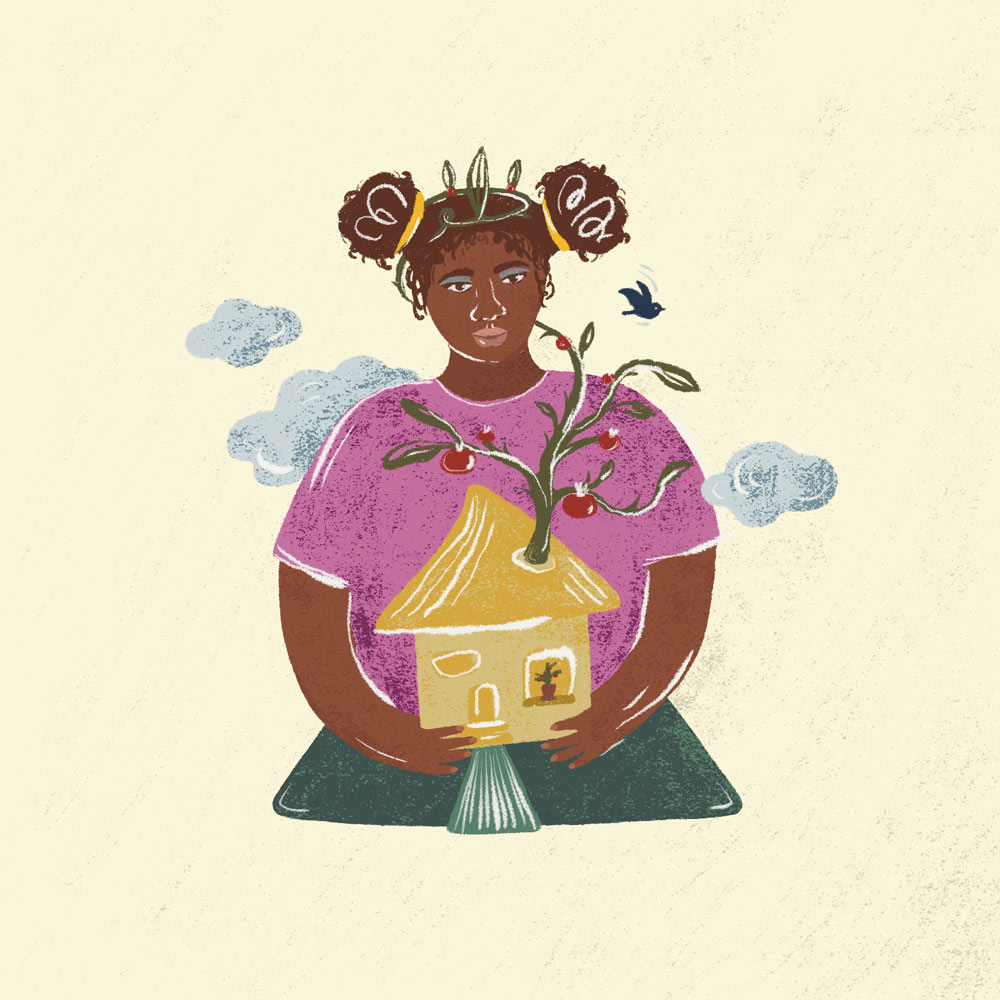
In the Locked Out: Black Women, Wealth, and Homeownership series, members of Insight Center, Springboard to Opportunities, and several expert co-authors connect the lived experiences, hopes, and dreams of low-income Black women and their perspectives on homeownership to the historic and current policies that fuel our exclusionary housing market and its mental health effects to advocate for equitable housing solutions for Black women.
Black women hold diverse and nuanced socioeconomic and political identities, and as such, our policies targeting racial and gender inequality must be flexible and adaptable. This is a core tenet of racially just policies and programs. Yet, too often in our politics and culture, Black women are presented as a monolith. Painting this diverse group with a broad, generalizing brush is dehumanizing and othering, particularly considering the nuances afforded to groups like white women, whose range of socioeconomic and political identities are granted more recognition.
Lumping together a myriad of experiences and circumstances leads to one-size-fits-all programs and policies that fail to account for the tremendous differences among Black women, resulting in inequitable outcomes for these women.
The legal scholar who developed the concept of intersectionality, Kimberlé Crenshaw, explains the limitations of viewing oppression using an “either/or” view instead of a “yes, and.”
With Black women as the starting point, it becomes more apparent how dominant conceptions of discrimination condition us to think about subordination as disadvantage occurring along a single categorical axis. I want to suggest further that this single-axis framework erases Black women in the conceptualization, identification and remediation of race and sex discrimination by limiting inquiry to the experiences of otherwise-privileged members of the group.
This erasure of Black women from social policy built on a single-axis framework is especially true with respect to housing.
Specifically, policymakers do not consider Black women living in poverty when developing programs that help people purchase and retain ownership of a home. As administrators of two guaranteed-income programs focused on Black women, we work each day to improve the economic conditions of program recipients and tailor our work to their lived experiences. In speaking to these women, we learned that they rarely view a home as primarily a wealth-building mechanism; mainly, a home is a private, secure place that enhances self-determination and agency and acts as a family cornerstone.
Take for example, Shaquille, a mother in Jackson, MS, who has experienced homelessness. When asked what her top motivation was in wanting to be a homeowner, she didn’t talk about investments or retirement, but rather her children. She wanted to have something of her own so that her kids would never confront the housing insecurity she faced. “I’ve experienced homelessness, and I don’t want my children to ever worry about their security and be put in the same situation I was.”

In addition to keeping their kids safe, mothers desired to pass an asset down to their children. Making such a hope into a reality is an uphill battle; Urban Institute research shows that Black families buy homes later in life than white people, buy less expensive homes, and are less likely to be able to hang onto those homes.
Contending with such challenges doesn’t dampen the desire of low-income Black mothers to build generational wealth through homeownership. Shameka, who lives in Atlanta’s Old Fourth Ward, described wanting to pass down a home to her children. She wants to provide a stable place for her family and a home that her children can return to as they grow. They currently live in public housing, and the pathway to homeownership is filled with barriers. Although she planned to purchase a home in the next few years, she says, “All of our rainy-day savings are going for never-ending storms that have happened.” Shameka noted that their current apartment is a place to live, not their actual home, explaining that a home “is yours, and no one can take it away from you.”
Several low-income Black mothers expressed similar sentiments, particularly after the COVID-19 pandemic. Having watched so many in their community and families lose their lives (especially due to the racial inequalities in our health system, as discussed later in this series), they were all too familiar with what can happen when a parent dies and leaves a child behind. Many Black mothers living in poverty felt that owning their home would ensure that their children have a place to live or would provide assets to support their children if the mothers were no longer around.
Sign up for our free newsletters
Subscribe to NPQ’s newsletters to have our top stories delivered directly to your inbox.
By signing up, you agree to our privacy policy and terms of use, and to receive messages from NPQ and our partners.
Aside from financial and housing security concerns, the privacy and safety afforded by owning a home was another common theme among the low-income Black women aspiring to homeownership who spoke with us. Tiyonda, who lives in a subsidized housing complex in Jackson, MS, talked about having a backyard where her children could play and she could have her own space, without feeling hemmed in by neighbors on the other side of her wall, always watching her comings and goings.
Ashala, another subsidized housing resident in Jackson, spoke of wanting to let her daughter go outside without constantly worrying about violence right outside her door. As a full-time caregiver for her grandmother, she also envisioned being able to decide who could stay in her house and for how long, a right she did not have as a subsidized housing tenant. Many mothers living in subsidized housing reported that leasing rules were weaponized against them, especially when they were with partners or trying to help family. Management would use cameras to surveil tenants and see whether their overnight guests stayed “too often,” resulting in a lease violation.
Maile, a young professional in San Francisco, lives with her young daughter in a below market-rate studio apartment, which she secured through an affordable housing lottery system. She has explored programs to help low-income residents buy homes, but thanks to inflation and San Francisco’s cost of living—one of the highest in the country—she’s struggled to save a down payment. She points out the importance of preserving the diversity of cities like San Francisco, which is pricing out residents of color. “Owning a home as a Black and Brown mama in San Francisco would feel so revolutionary because of gentrification and the major displacement of families going through housing programs that cannot afford to keep us here,” she said. “Having the ability and access to own a home would give me peace of mind because it would make me feel more valued as a resident of this city.”
Subsidized housing restrictions are extremely strict and limit everything from visitors to cosmetic changes to an apartment or house, reflecting the patriarchal nature of our social safety net. Some women said they no longer wanted to deal with ongoing inspections to make sure their house was up to Section 8 housing management’s subjective cleanliness standards. They also expressed a desire to decorate their homes—for example, to paint the walls any color and hang art and family photos.

The ability to express ourselves and feel secure in the homes we create is a key component of agency and the ability of individuals and families to self-determine. Carol of Clay County, GA, described that she did not grow up with much and did not have electricity until she was an adult. Today, the cost of rent and utilities in her rural community far outpaces wages, making it hard for families to pay for necessities like electricity, transportation, and groceries. To Carol, “owning a home is the most wonderful thing you can do” because it ensures a place where she and her family can “lay their head” without worry of being told to get out. Carol described many items that she could go without, but she noted that housing is a necessity. She also explained that many housing providers take advantage of that fact by neglecting their properties or exercising unfair control over residents. Although Carol’s five children are now adults, a home would still be a bedrock for her and her extended family in the community.
Sequoyah from Atlanta described loving aspects of her apartment and the area where she lives—it’s one of the reasons she’s been there most of her life. As a lifelong resident of a historic Black neighborhood undergoing intense gentrification, she views her family’s role as the neighborhood’s “keepers of the culture.” However, houses in the neighborhood are unaffordable, and living in public housing limits her independence. Sequoyah described home as a place of sanctuary and refuge and a place to call your own—from growing one’s own food to upgrading the space, homeownership expands the power of self-determination.

To address Black women’s needs, we must reimagine wealth and understand that its full value far exceeds the value of assets minus debt. We would be better served by our economic policies if we considered more than financial outcomes. This is especially true considering what marginalized Black women have shared about the barriers to homeownership that they’ve faced and the significance of becoming homeowners. Signs that our leaders are pursuing new solutions include this year’s release of An Economy for All: Building a “Black Women Best” Legislative Agenda—a framework to center Black women in economic policymaking released this year by the Congressional Caucus on Black Women and Girls.
The dreams and stories behind why Black women are interested in homeownership are as diverse and nuanced as the women themselves. To move beyond presenting all Black women as a monolith, we should listen to and learn from their stories. We must recognize that lived experience rarely fits within the simplistic narratives with which our country’s policymakers and officials describe families in poverty—and particularly, Black women-led families in poverty.
In the next installment of the Locked Out series, we’ll dive into the policies and practices—both historic and current, public and private—that prevent Black women from having the same access as their white peers to wealth building through homeownership.
